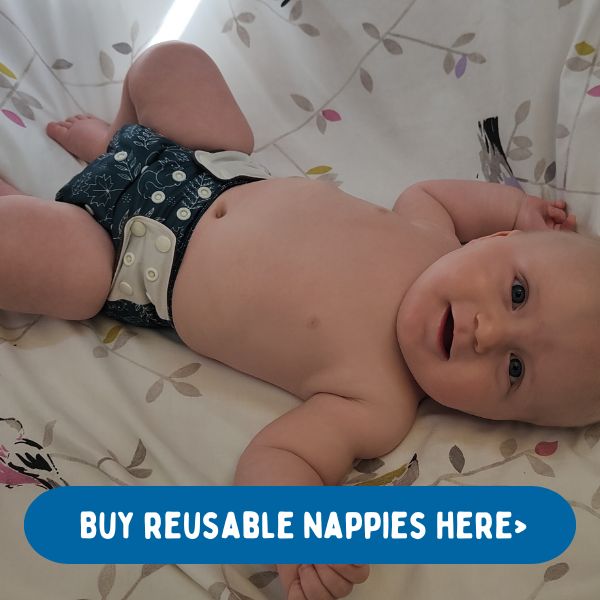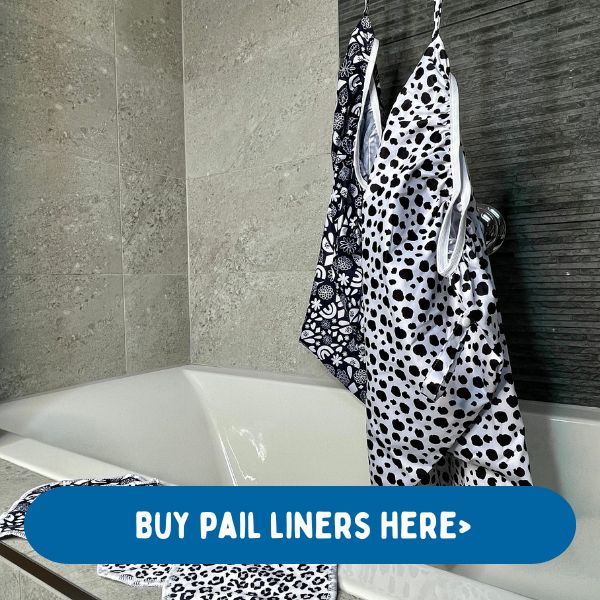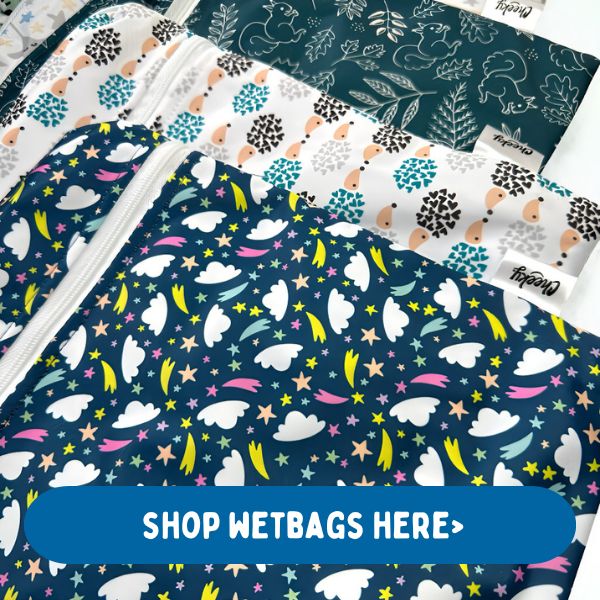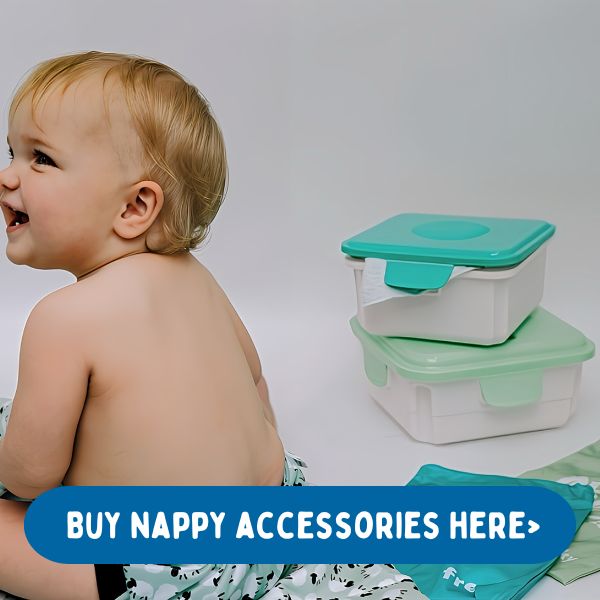Are Reusable Nappies Hygienic?24 July 2024 Yes, reusable nappies are hygienic. Despite common misconceptions around them, as long as you wash them in line with manufacturers guidelines, they are both hygienic and safe and won't cause nappy rash. In recent years, there has been a noticeable shift in the way parents approach baby care, particularly when it comes to diapering. As environmental concerns continue to grow, more and more families are seeking sustainable alternatives to traditional disposable diapers. Enter reusable nappies: a modern, eco-friendly solution that is gaining popularity around the world, including here in Australia. Reusable nappies, also known as cloth diapers, are designed to be washed and reused, making them an environmentally conscious choice. 
Unlike disposable diapers that end up landfill, washable nappies are made from sustainable materials like cotton and bamboo which are gentle on both the environment and your baby's skin. According to a recent study, approximately 10% of Australian families have made the switch to reusable nappies, and this number is steadily increasing as awareness grows about their benefits. Parents are drawn to reusable nappies not only for their reduced environmental impact but also for their cost-effectiveness in the long run - they can be used for more than one child. We'll explore the process of cleaning reusable nappies, answer common questions about their use, and provide tips for keeping them in top condition. How to clean reusable nappies How to clean stubborn poo off reusable nappies Can you wash reusable nappies with clothes? Can you tumble dry reusable nappies? Cleaning reusable nappies might seem complicated at first, but it's actually a straightforward process that fits easily into your regular laundry routine. Here's how to clean reusable nappies: Pre-Rinse: Begin by pre washing the soiled nappies in cold running water. This helps to remove any excess waste and prevents stains from setting in. This can be done daily in the washing machine (some prefer every other day or to rinse before they wash), including the night nappy. You can go nappy by nappy rinsing through the day. Store in a Dry Pail: Dry pail the nappies until you're ready to wash a full load. This can be - 
Wash Regularly: Aim to wash nappies every two to three days. We recommend a bio powder at 40 degrees as the most effective for cleaning, the enzymes eat bacteria and can get everything clean at lower temperatures than non-bio meaning your wraps and any PUL won't be damaged by heat. Select the Right Cycle: Set your washing machine to a long wash cycle with hot water (40 degrees with bio 60 degrees non bio but remove your wraps if they need a cooler wash) in a 4/5th full machine - not too little and not too much, adter the rinse you can add babies clothes and bedding to bulk it out if needed. This helps make sure the nappies get agitated enough. Extra Rinse: Add an extra rinse cycle to ensure all detergent is thoroughly removed, preventing any residue that might cause irritation or build up. Dry Thoroughly: Line dry nappies in the sun whenever possible. Sunlight naturally bleaches and sanitizes, keeping nappies fresh. Alternatively, you can use a dryer on a low-heat setting for any material parts - not nappy covers or anything PUL lined. Avoid using a wet pail or leaving nappies soaking in water, as it can become a breeding ground for bacteria, odours. and can cause ammonia to build up and spread over all fabrics shortening their life. 
While cleaning reusable nappies is generally easy and stains are rare, dealing with poo has a learning curve. Here are some tips to clean stubborn poo off reusable nappies: Flush Solid Waste: Begin by flushing any solid waste down the toilet. You can use a diaper sprayer or a dedicated spatula to remove excess residue. Pre-weaning all milk poo (formula and breast) is water soluble so don't feel too worried if some ends up in the wash Pre-Treat To Avoid Stains: Apply a gentle oxi based stain remover or a paste made of baking soda and water directly to the soiled area. Let it sit for 10-15 minutes before washing. Vanish / napisan are good options. Soak in Cold Water: Soak the nappies in cold water for an hour to loosen the stain. Adding a cup of vinegar, stain remover or detergent to the soak can help neutralize odors and break down the stain. Do not leave for longer than this. Use a Stain-Removing Cycle: If your washing machine has a stain-removing cycle, use it. This cycle typically involves longer full wash times and higher water levels to ensure thorough cleaning. Dry In The Sun: UV light works wonders on poo stains. Get your nappies out on the line. Drying under the sun has the added benefit of naturally bleaching any remaining stains, leaving nappies looking fresh and clean. With time, most stains will fade with consistent washing. Yes, you can wash reusable nappies with clothes, but there are a few considerations to keep in mind to ensure both the nappies and your clothing come out clean and fresh. Make sure most of the solids have been removed and the nappies have been through a rinse cycle. Avoid fabric softener as it will coat the nappies and affect their absorbency. Make sure the machine is not under or overloaded. 
Yes, you can tumble dry reusable cloth nappies, but it's important to follow specific guidelines to ensure they remain in excellent condition. Use the dryer f you need them back in rotation in a hurry, but ideally both nappies and wraps should be air dried if possible. Make sure you select a low heat, using the high heat can lead to shrinking or damage to the elastic and waterproof layers. Not only is air drying more energy-efficient, it helps prolong the life of the nappies. Reusable nappies are an excellent choice for families as they are eco-friendly and cost-effective. With proper care and washing, they are just as hygienic as disposable nappies and offer many benefits for your baby and the planet. By following the steps outlined in this guide, you can ensure that your reusable nappies remain clean, safe, and effective for years to come. For more information or to explore other baby care tips, feel free to contact us or visit our website for additional blog posts and resources. Happy diapering! About the Author: Kirstin is part of the Customer Experience team at Cheeky Wipes, which since 2008 has been selling the original reusable wipes kit. She is mum to three kids and loves the forest, the sea and the hills! Kirstin spends most days talking about poo, pee and periods and loves a chance to overshare. Cheeky wipes were recognised with a Queens Award for Enterprise in Sustainable Development in 2021, celebrating their hard work over the last 13 years. |